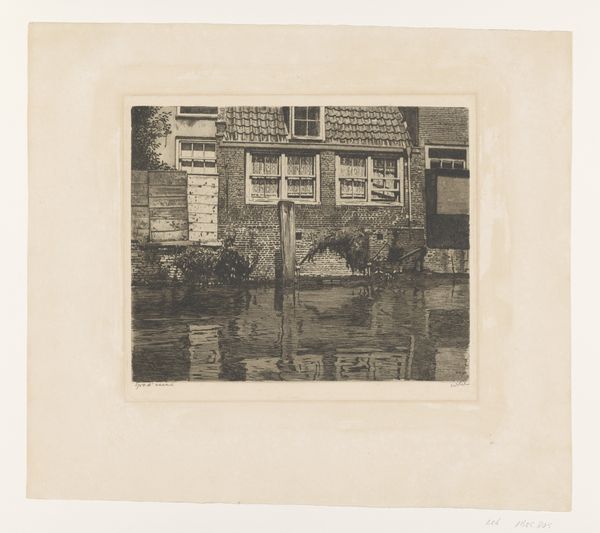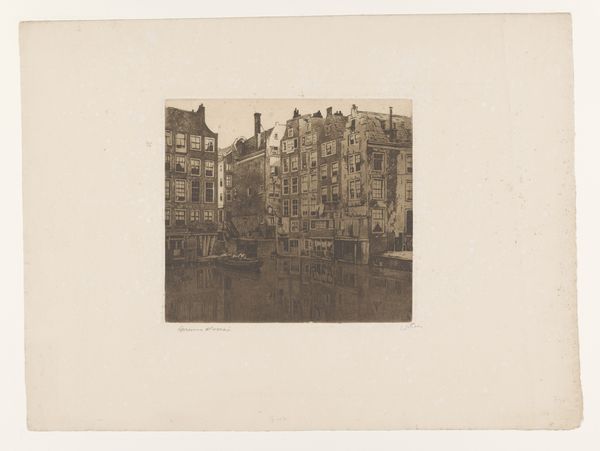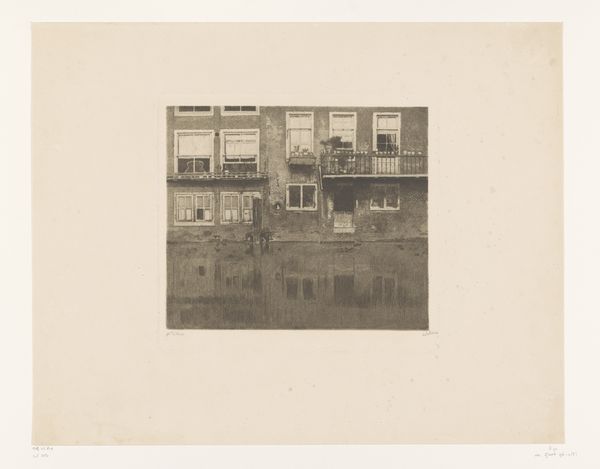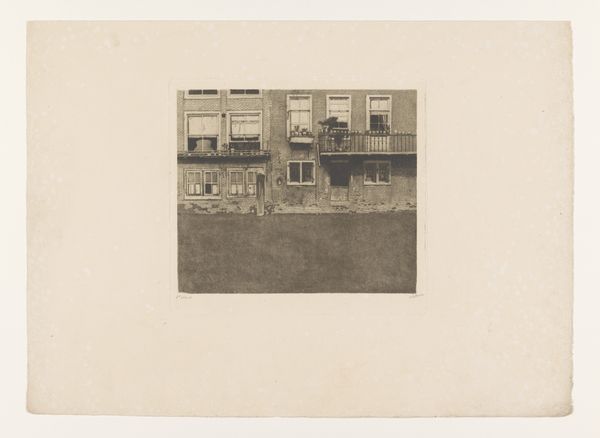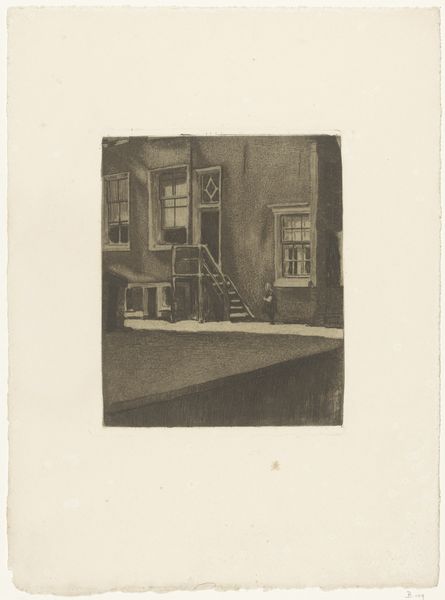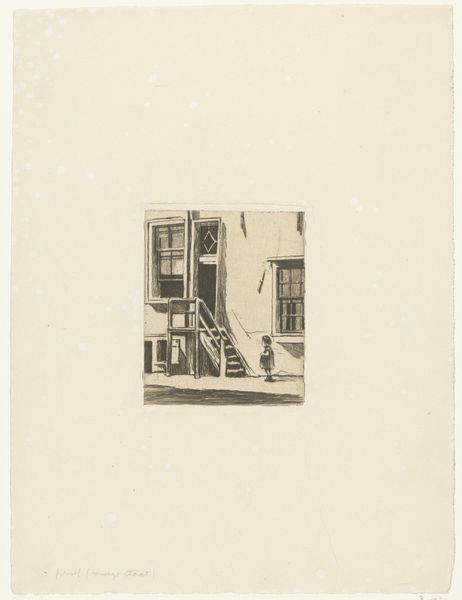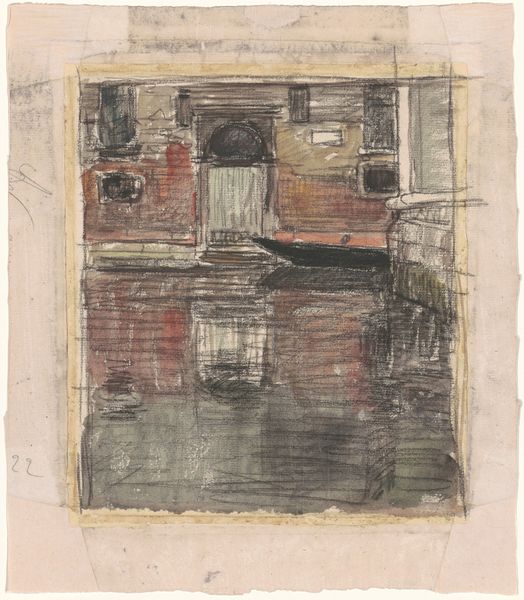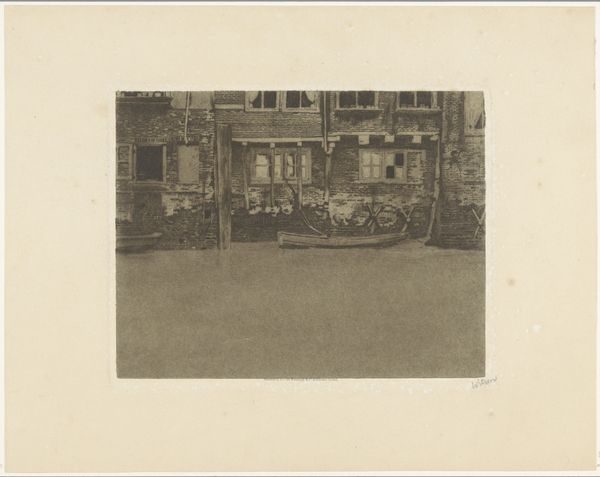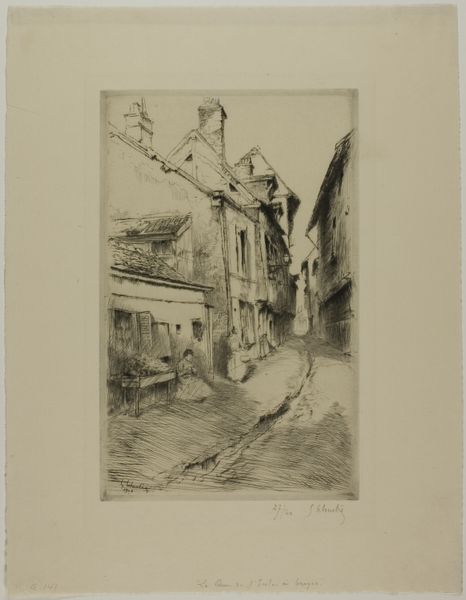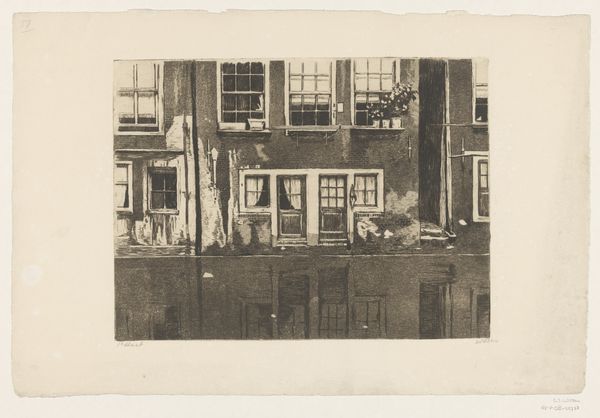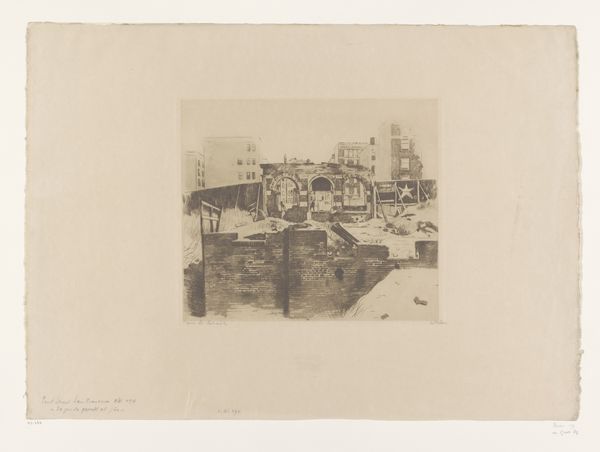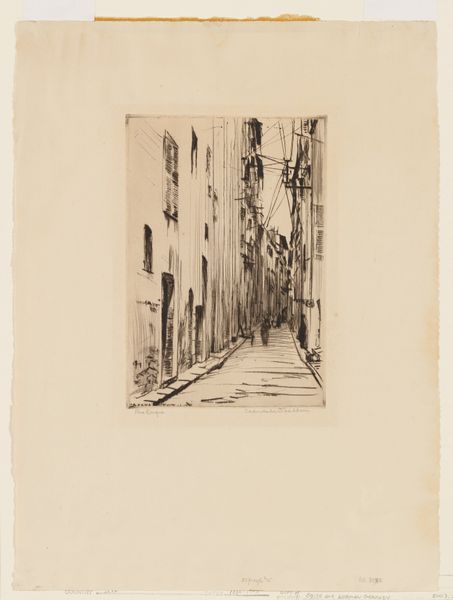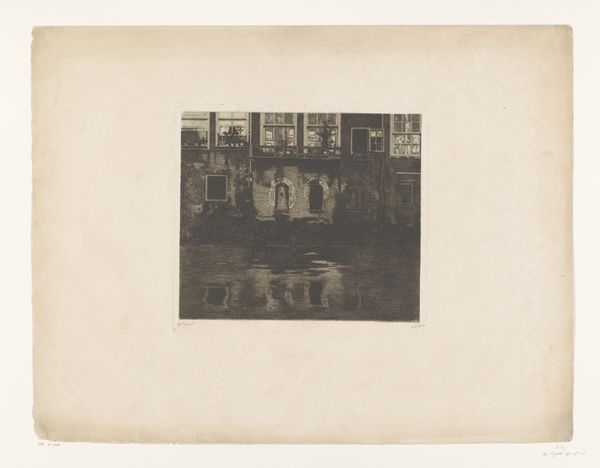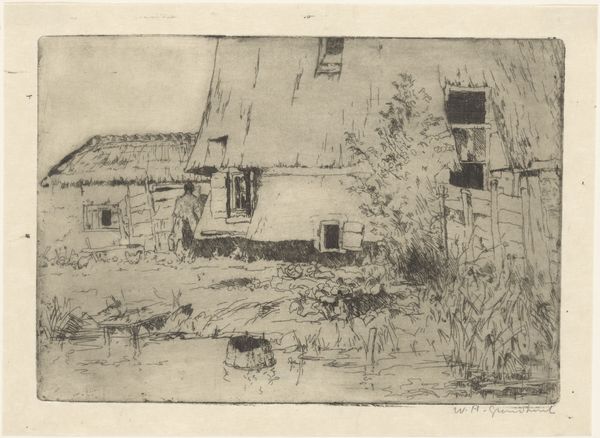
Dimensions: height 248 mm, width 329 mm
Copyright: Rijks Museum: Open Domain
Curator: Welcome! We’re standing before Willem Witsen's “Gezicht op de achterzijde van de Zeedijk in Amsterdam,” created around 1897. This etching, now held at the Rijksmuseum, offers a view of Amsterdam's Zeedijk. What are your initial impressions? Editor: A sense of quiet melancholy. The textures of the brick and plaster feel incredibly tactile, almost decayed. It makes me wonder about what’s hidden behind those walls, and how much history has seeped into the very structure. Curator: That's astute. Witsen, deeply involved in the Dutch etching revival, was fascinated by Amsterdam's urban landscape. The back of buildings and often overlooked, anonymous urban areas were recurring motifs. Consider the doors, and windows as visual language – each possesses symbolic significance. Doors can suggest possibilities, transitions, the passage from one state to another. Editor: Right, but they’re all closed, bolted! It feels a bit oppressive, doesn't it? Even though it's a humble subject, the treatment elevates it beyond mere representation. I detect subtle echoes of Impressionism here too, particularly in how the light softens edges and creates this misty, dreamlike effect. Curator: Precisely! Witsen skillfully uses the etching technique to capture those fleeting atmospheric moments, embracing the then current Impressionist principles while maintaining his own unique style. He also belonged to a circle of artists, writers and intellectuals that consciously turned away from naturalism towards a more intimate form of artistic expression. This, like the door motifs, also reflected a turning inward, or transition. Editor: Transition is a powerful word to invoke here, it also makes me think of the city itself. What narratives are embedded within these old walls? How do the structures reflect not only architecture, but the mental spaces we as a collective inhabit? Also, I'm fascinated by the visible human touch – you can practically feel the artist’s hand as he rendered those weathered surfaces. Curator: And isn't that what great art does, connect us to human experience across time and culture through layers of embedded and sometimes unconscious symbolism? Editor: Exactly! Looking at this now, I think I feel less melancholy and more a sense of connection to the past, and this strange, lovely cityscape.
Comments
No comments
Be the first to comment and join the conversation on the ultimate creative platform.
